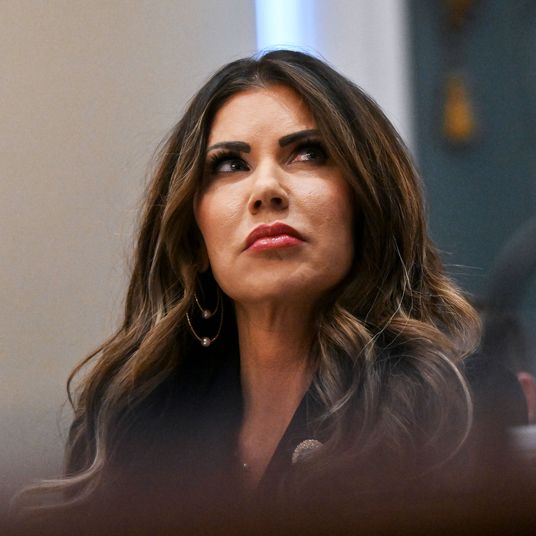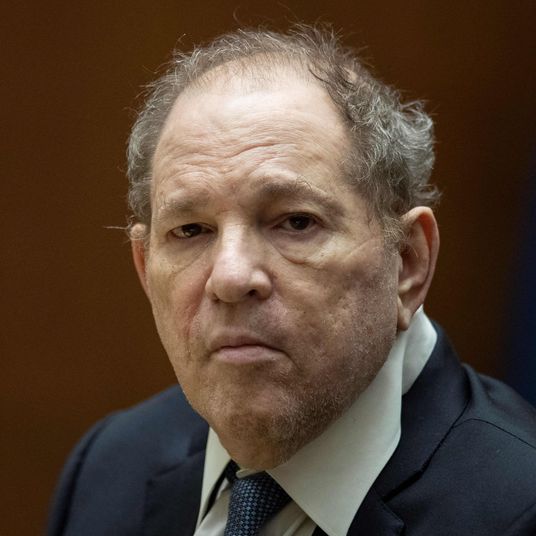
On Thursday night, Tucker Carlson, his brow furrowed in a perfect imitation of a human facial expression, devoted a segment to the beloved children’s Christmas special Rudolph the Red-Nosed Reindeer and the possibility that some liberals found Rudolph to be “problematic.” Joined by libertarian YouTuber Dave Rubin, Carlson investigated a short video that HuffPost had made collecting and displaying a handful of joking tweets about Rudolph being politically regressive. “Reassure me,” Carlson said to Rubin, “this is real.” It was real, Rubin confirmed, and worse, HuffPost was “trying to take” Rudolph “away from you.”
At the risk of giving away the game: HuffPost has no desire to take Rudolph away from viewers of Fox News; it created a video composed of other people’s tweets and gave it a sensational angle because it thought people might watch the video, increasing its reach on social media and its ability to sell lucrative video advertisements.
But the real question is, why did Tucker Carlson choose to devote so much of his valuable airtime to a HuffPost video about tweets, instead of, say, to educating and empowering his viewers to take action in their communities? One answer might be “because he is a fundamentally unserious person who fumbled his way into a lucrative career of stoking fear and resentment in the elderly.” But let’s not be snide about Tucker Carlson! Let’s be scientific. The reason that Tucker Carlson devoted a segment to Rudolph is because Tucker Carlson, like a mountain river, serves a key role in a beautiful and essential natural process: the Content Cycle. And “Problematic Rudolph” is an object lesson in that process.
The Content Cycle, a phrase I did not just come up with right now, describes how content arises from the internet, is absorbed into cable television, and then gets redistributed back into the internet for the cycle to begin anew. Like the water cycle, the Content Cycle provides sustenance and habitation to a multitude of organisms, and in many ways it exists independently of human thought. Let’s walk through Problematic Rudolph as our emblematic example of the Content Cycle.
Stage One: Raw Content. The content cycle almost always begins with content that is freely distributed on a large social network. In this case, the content was a bunch of joking tweets generated around the trending topic #RudolphtheRedNosedReindeer, like “I don’t have strength to watch this again. Those poor elves. That bully with the whip. Abusive deer. Dentist shaming. Unloved toys. It’s too much.” Or, “Teaching kids since 1964 that your peers will only accept your differences if you can provide them with some kind of service.”
The originally intended audience for these tweets was the relatively small number of people on Twitter checking the same hashtag, but as the content cycle progresses, the initial content is absorbed by entities higher up on the content chain, and directed toward new audiences. In Stage Two: Aggregation, the joking tweets were gathered by HuffPost for a post in its comedy section, whose different and possibly larger audience allowed the content to remain fresh as it progressed through the cycle.
The original jokes about Rudolph were largely about bullying and workplace issues, without a particular social-justice bent, but as content moves through each stage of the cycle, it is progressively stripped of the unwieldy and limiting “context” and “intent” it began with. The video created by HuffPost to accompany its blog post helped to advance the content cycle by implying a more specifically liberal political angle to the underlying joke: The in-video title is “Rudolph the Marginalized Reindeer,” and the video was tweeted out with the text, “The holiday TV classic ‘Rudolph The Red-Nosed Reindeer’ is seriously problematic. 😳.” This set the stage nicely for Stage Three: Amplification.
In the amplification stage, the raw content (having been processed and decontextualized into a frictionless and shareable content unit in the aggregation stage) is presented to yet another, generally even larger audience — or several audiences — by an influencer or two. In this case, by Donald Trump Jr., who tweeted a link to the HuffPost video with the text, “Liberalism is a disease.”
Once amplified, the content is ready for Stage Four: Cable News. This is where Tucker Carlson comes in. Having been alerted to the presence of usable content — now four stages removed from the original audience, context, and intent of the raw content — by influencers, cable producers can craft a segment for their audiences, which will most likely not have been exposed to this content at any prior stage in the cycle. “As I’m watching that, all of a sudden I had this panicked feeling that maybe I fell for an elaborate, ironic prank from HuffPo,” Carlson says at the start of the segment. Of course not, Tuck! You’re just riding the Content Cycle!
But an appearance on cable, while in some ways the climax of the content cycle, is not its end. It’s a cycle, after all! And what makes it more efficient than a simple teleological progression is that television is not an endpoint, but a way station, a place to generate and process content anew. This is Stage Five: Reabsorption, in which the content returns to social media. During the reabsorption phase, Twitter users react to their televisions — in this case tweeting about Tucker Carlson just as the creators of the original raw Rudolph content were tweeting about Rudolph the Red-Nosed Reindeer — and the content is reintroduced to Twitter like snowmelt running off into the plains. A new audience of Fox News haters is introduced to the content, five stages evolved from its raw state and repackaged from minor jokes to social-justice crusading to Fox News outrage fodder, and the cycle begins again.
Of course, just as the water cycle only gives a very broad description of water’s movement through the environment, the Content Cycle only gives a broad description of how content flows around our world. Not all content will proceed through all five stages; some content never moves at all.
Some people might complain that the Content Cycle is corrosive and demeaning — that it’s cynical and even fraudulent to strip minor joking tweets of any context and to present them to audiences for the sole intent of generating outsized emotional reactions. But you can begin to see from this description how vital the cycle is to our natural media environment. It sustains not just major cable hosts like Carlson, but also HuffPost bloggers; not just aggregation-happy media conglomerates like Verizon Media Group, but also vast social networks like Twitter. People like to discuss the ill effects of social media on misinformation, but the Content Cycle demonstrates the deep, almost biological connection between the megaplatforms of the internet and legacy media like television, in a complex ecosystem of aggregation, outrage, performance, and attention.
And what a beautiful, healthy ecosystem it is.
*A version of this article appears in the December 10, 2018, issue of New York Magazine. Subscribe Now!





























